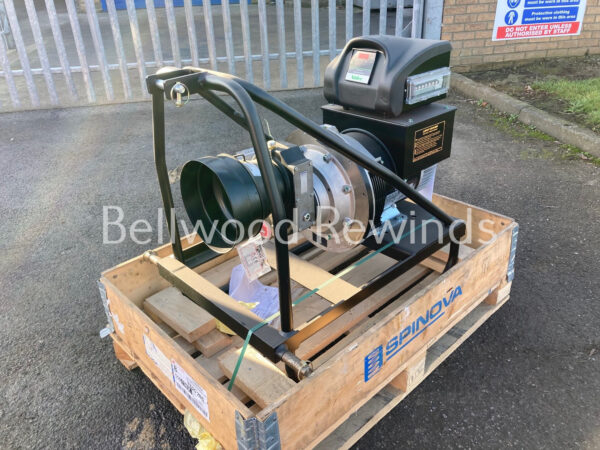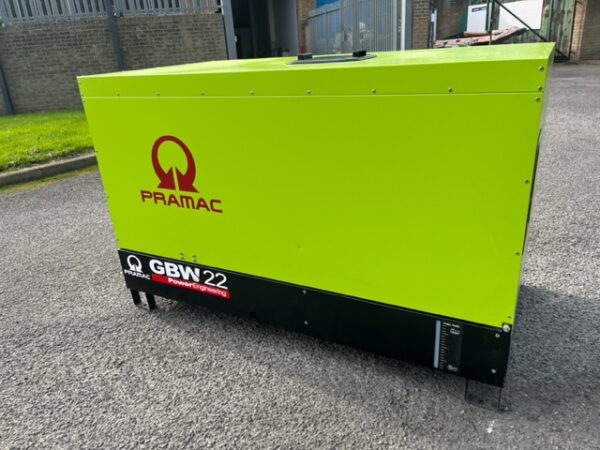We Buy Your Generator
- Finance Available, on all new generators.
The world of heavy industrial machinery, including generators and motors, relies heavily on the balance of rotating bodies to function optimally and avoid catastrophic failures, noise, and discomfort. Balancing these mechanical components involves a meticulous process of ensuring the centre of gravity aligns perfectly with the axis of rotation. In this guide from Bellwood Rewinds, we’ll delve into the nuances of static balancing and dynamic balancing, exploring their definitions, differences, and the crucial role they play in the realm of heavy machinery.
Balancing is a fundamental aspect of maintaining the health and performance of rotating machinery. It is crucial to preventing vibrations that can lead to failure and damage. When heavy industrial equipment, such as generators and motors, operates without proper balancing, it can result in significant repercussions. The repercussions may range from simple discomfort due to excessive noise to catastrophic failure, causing expensive repairs and downtime.
In the quest for precision and reliability, both static and dynamic balancing come into play. To comprehend their differences and applications, let’s explore each in detail.

Static balance is achieved when the centre of gravity of an object aligns perfectly with its axis of rotation. In simpler terms, a statically balanced object remains stationary, with its axis horizontal, without the need for any braking force. Unlike dynamically balanced systems, statically balanced objects do not exhibit a tendency to rotate due to the force of gravity.
Imagine a perfectly balanced wheel where the centre of gravity rests exactly on the axis of rotation. In this scenario, the wheel will stay in place without any external intervention. Static balancing is crucial in situations where maintaining a stable, motionless state is essential.
Dynamic balancing, on the other hand, goes beyond achieving stillness. It is the art of balancing objects while they are in motion or transitioning between positions. Dynamic balance ensures that an object can rotate without the need for any external force or couple, except that required to support its weight.
When a system or machine is unbalanced, it can lead to stress on the bearings and various mechanical components. To counteract this imbalance and ensure smooth operation, counterbalancing weights are strategically added. Dynamic balancing involves a meticulous process of rotating parts at high speeds and employing electronic equipment to measure the imbalance. Based on these measurements, counterweights are added or subtracted until the vibration of the parts is significantly reduced, if not completely eliminated.
In essence, dynamic balancing enables rotating machinery to operate with precision, even when subjected to the challenges of real-world motion and position changes.


To grasp the distinctions between static and dynamic balancing, it’s essential to consider their core characteristics:
State of Balance:
Static Balancing: Achieves balance in a stationary state, with the center of gravity aligned with the axis of rotation.
Dynamic Balancing: Ensures balance while the object is in motion or transitioning between positions, without requiring external forces beyond supporting its weight.
Application:
Static Balancing: Ideal for situations where maintaining a motionless, stable state is crucial, such as in some precision instruments and static components.
Dynamic Balancing: Essential for rotating machinery, where achieving precision during motion is paramount, to prevent vibrations, noise, and potential damage.
Imbalance Correction:
Static Balancing: Corrects imbalance by repositioning the centre of gravity to align with the axis of rotation.
Dynamic Balancing: Corrects imbalance through the addition or subtraction of counterweights, ensuring precise motion and minimising vibrations.
Balancing holds immense significance in the world of machinery maintenance. Here are some key reasons why balancing is a critical practice:
Vibration Mitigation: Unbalanced machinery can generate excessive vibrations, leading to discomfort, noise, and potential damage. Balancing helps mitigate these vibrations, ensuring smooth and quiet operation.
Enhanced Lifespan: Balancing extends the service life of machinery by reducing wear and tear on components. It prevents premature failures and the need for costly repairs.
Quality and Accuracy: Balanced machinery operates with precision and accuracy, crucial in applications where precision is paramount, such as in the medical field, aerospace, and industrial settings.
Catastrophic Failure Prevention: In heavy industrial machinery, catastrophic failures can be disastrous in terms of both safety and cost. Balancing helps prevent these failures by ensuring that all components function harmoniously.
Efficiency: Balanced machinery operates more efficiently, reducing energy consumption and operational costs.


At Bellwood Rewinds, we understand the critical role that balancing plays in maintaining machinery reliability and performance. Our expertise extends to offering comprehensive balancing services that encompass both static and dynamic balancing.
Our in-house team of trusted engineers is available 24/7 to address your balancing needs, ensuring that your machinery operates with precision and efficiency. With decades of experience in the diesel generator and motor repair industry, we have balanced a diverse range of rotating items, including rotors, impellers, shafts, and fans.
If you’re seeking the assurance of balanced machinery, Bellwood Rewinds is your reliable partner. Contact us today to schedule your balancing service or to learn more about how we can help you achieve precision in your machinery’s operation. We are not only experts in the field of dynamic balancing, from our base in Hartlepool we offer a range of electrical motor repair services, AC/DC motor repairs, transformer rewinding along with the hire, rental, repair and maintenance of petrol and diesel generators.
The world of heavy industrial machinery relies on the precise art of balancing to ensure smooth, reliable, and efficient operation. Whether it’s achieving stillness in static balance or precision in dynamic balance, the importance of these practices cannot be overstated. When it comes to machinery maintenance, balancing is the key to preventing catastrophic failures, extending lifespan, and delivering the quality and accuracy that industries demand.
Telephone 01429 264 097